 Sustainability
Sustainability
- TOP
- Sustainability
Sustainability Initiatives
Sustainability Policy
Chapter 1 General Provisions
Purpose
Business Domains
Basic Approach to Sustainability
We will establish the following four activity areas related to sustainability and manage the progress of the specific issues to be addressed qualitatively or quantitatively under the supervision of the Board of Directors.
- (1)Activity area related to economy through food
- (2)Activity area related to active participation of human resources
- (3)Activity area related to social contributions
- (4)Activity area related to environmental preservation
Chapter 2 Activity Areas
Activity Area Related to Economy Through Food
- (1)Work to ensure appropriate quality products that satisfy customer needs
- (2)Work to build a low-cost supply system through concerted corporate efforts
- (3)Account for business risks (including risks relating to climate change), and strive to establish business continuity frameworks
- (4)Work to strengthen compliance system by enhancing our auditing and supervisory functions, while complying with various laws, regulations, and internal regulations
Activity Area Related to Active Participation of human resources
- (1)Work to develop training systems for each job level, from Directors to general employees
- (2)Work to create a comfortable working environment for employees and develop a personnel system
- (3)Work to nurture an environment that encourages Directors and employees to deepen their understanding of diversity, and ensure diversity among Directors and employees
- (4)Engage in activities to maintain and promote the health of employees and their families
Activity Area Related to Social Contributions
- (1)Promote support dietary education, physical education, and general education
- (2)Work to support the acquisition of vocational skills
- (3)Address human rights issues
Activity Area Related to Environmental Preservation
- (1)Work to reduce food loss
- (2)Pursue energy-saving measures
- (3)Work on the three Rs: reduce, reuse, recycle
- (4)Reduce CO2 emissions
Material Issues
We have entered an era in which it is imperative that companies engage in business operations that are considerate of the environment and social contribution. Halows has long upheld its management philosophy of “contributing to improvements in life and culture in local communities,” and sought to create a virtuously beneficial society through food.
Working together with our stakeholders to address global environmental, social, and economic challenges proactively and continuously, we will contribute to the creation of happiness for people all over the world and further promote activities that are conscious of sustainability in our day-to-day operations.
With regard to sustainability initiatives, we consider the degree of importance of specific issues to Halows’ business activities and to our stakeholders, and we have identified issues that are considered especially important as material issues that Halows needs to address.

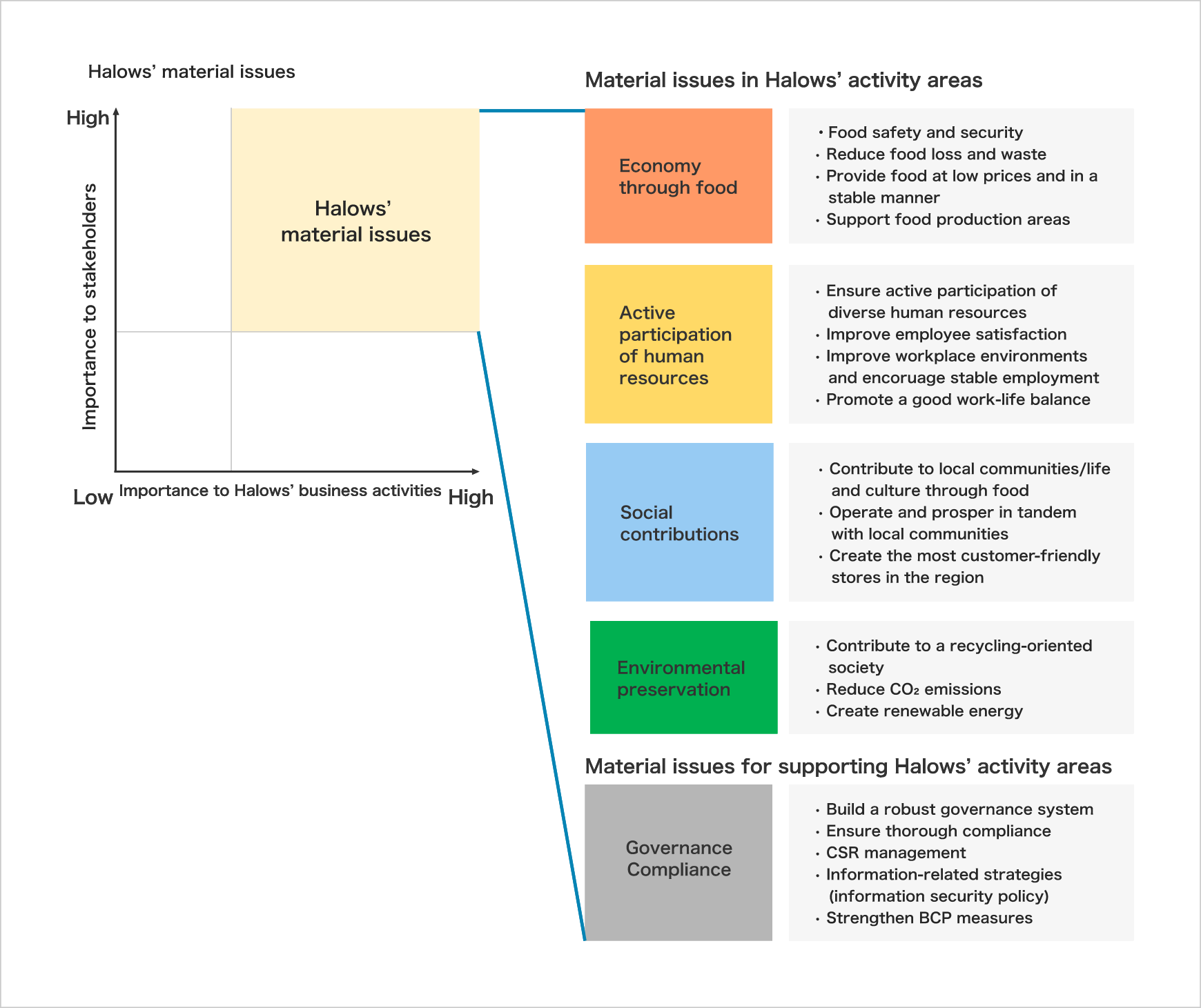
Economy Through Food
To contribute to the improvement of the food culture of customers in the regions, we will work to supply safe and reliable products at low prices and in a stable manner.
To do this, we strive to introduce the concept of safety and reliability into our day-to-day operations and into the equipment and fittings that are used by customers and employees, strengthen our quality management systems, and enhance product development and customer-friendly store facilities.
Active Participation of human resources
The growth of each and every one of our Directors and employees is of utmost importance for the continuation of sustainability initiatives. We are working to develop systems that will enable our people to actively participate in the workplace.
Social Contributions
In response to issues related to society and human rights, we aim to make contributions in various areas in local communities such as education, sports and dietary education.
We also believe that food plays an important role in local communities.
Environmental Preservation
To resolve the issues surrounding the global environment (CO₂ emissions reduction, energy problems, effective use of resources, countermeasures against the destruction of nature, etc.), we are engaged in the collection of resources at stores and the effective re-use of resources.
Addressing Climate Change
Halows endorsed the recommendations of the Task Force on Climate-related Financial Disclosures (TCFD) in April 2023. We will strive to identify and analyze any risks and opportunities that climate change presents to our business with reference to the TCFD framework, and also to implement appropriate risk management, reflect any changes in our business strategy, and appropriately disclose relevant information. We aim to generate sustainable growth through our business while helping reduce CO₂ and other greenhouse gases, which are thought to be one of the causes of global warming.
The Sustainability Committee takes the leading role on reviewing and enhancing the content of information disclosure based on the TCFD framework on an annual basis.
Indicators and Targets
We aim to achieve carbon neutrality through our business activities. We plan to consistently monitor our CO₂ emissions and implement environment-conscious measures to achieve our reduction targets.
Understanding CO₂ Emissions
We recognize the environmental impact of our business activities by continuously monitoring CO₂ emissions within the company, and we strive to reduce this impact through our various initiatives.
Setting Targets for Reducing CO₂ Emissions
We set targets for reducing CO₂ emissions to help achieve sustainable business activities and, ultimately, carbon neutrality.
Halows will implement the following initiatives to achieve its CO₂ emissions reduction target.
- ●Introduce renewable energy
- ●Review refrigerant equipment
- ●Introduce highly efficient equipment
- ●Reduce plastic products
- ●Reduce food wastage rate
Addressing Climate Change (Governance System)
Halows established its Sustainability Committee to realize a sustainable future by balancing the resolution of social issues and the pursuit of corporate growth. The Sustainability Committee works with the Board of Directors to determine promotion measures and monitor companywide initiatives.
As for initiatives for addressing climate change, the Sustainability Committee determines policies, shares environment-related issue, such as CO₂ and other greenhouse gas emissions with each department, monitors companywide progress, and reports to the Board of Directors.
Overview of the Sustainability Committee
| Committee chair/Chairperson | President and Representative Director, Chief Executive Officer |
| Officer in charge | Director in Charge of the General Planning Department |
| Secretariat | General Planning Department |
| Committee members | Full-time Directors, General Manager of the General Planning Department, General Manager of the Personnel and Education Division, General Manager of the General Affairs Division, General Manager of the Finance and Accounting Division, and General Manager of the Development Division |
| Agenda items |
|
| Frequency of meetings |
Twice a year (August and February) |
Addressing Climate Change [Strategy]
We have analyzed future climate change risks and opportunities and identified the financial impact of each risk or opportunity on our company. We will organize and explore measures to avoid or minimize the impact of risks and maximize the benefits of opportunities, including those currently in progress or the planning stage.
We will respond flexibly to changes related to climate-change considerations by periodically reviewing identified risks, opportunities or countermeasures.
1. Scenario Analysis Steps
We conducted a scenario analysis using the following steps to identify risks and opportunities relating to climate change and to evaluate their financial impact.
i. Identifying analysis targets and scenarios
To help identify the impacts of climate change, we identified the targets companies and businesses for analysis, and the relevant analysis scenarios and time frames.
- ・Target company: Halows
- ・Target business: Product retail business
- ・Scenario: 2ºC scenario/4ºC scenario*Main reference materials: IEA World Energy Outlook 2021/IPCC Global Warming of 1.5ºC
- ・Analysis timeframe: 2030
ii. Enumerating risk items
We analyzed the risks and opportunities that are expected to arise due to climate change.
iii. Assessing business impact
We evaluated the expected risks and opportunities on a large, medium, and small scale, and considered the impact on our company finances.
2.Financial Impact of Identified Risks and Opportunities
| Risks and Opportunities | Content | Impact on Financial Affairs | ||
|---|---|---|---|---|
| Transition risks | Policy and law |
Introduction of carbon taxes There is a risk of increases in energy costs and the price of procured goods required for our business activities due to the introduction of carbon pricing. |
Higher cost | Medium |
| Stronger regulations on plastics There is a risk of an increase in purchasing costs due to the adoption of alternative materials for plastics (biomass plastic, etc.) |
Higher cost | Large | ||
| Tighter chlorofluorocarbon (CFC) regulations There is a risk of higher costs related to the introduction of green refrigerants (commercial refrigerators and air conditioners) to replace CFC refrigerants in the case of a tightening of regulations on CFC emissions. |
Higher cost | Large | ||
| Measures for achieving targets on reducing GHG emissions There is a risk of incurring capital investment costs linked to the replacement of equipment, etc. in order to achieve GHG emission reduction targets set by the national governments and industry associations. |
Higher cost | Small | ||
| Market | Changes in demand There is a risk of a decline in sales resulting from a delayed response to increased demand for low-carbon products and services. |
Lower sales | Small | |
| Reputation | Impact on stock price There is a risk of a decline in the company’s stock price caused by insufficient measures for addressing climate change. |
Lower sales | Small | |
| Physical risks | Acute risk Intensifying extreme weather events |
Store closures and restoration caused by abnormal weather There is a risk of a decline in sales if heavy rains, floods, typhoons and other extreme weather events result in unavoidable store closures. There is also a risk of incurring restoration costs to damage and repair of store equipment. |
Lower sales and higher cost |
Large |
| Supply chain disruptions There is a risk of lost sales opportunities and a decline in sales when abnormal weather conditions cause distribution to stagnate due to damage at supplier locations, changes in distribution routes, or route disruptions. |
Lower sales | |||
| The spread of infectious disease There is a risk of incurring costs in relation to capital investment in self-checkouts or expenses for securing additional personnel to compensate for personnel shortages caused by the spread of infectious diseases. |
Higher cost | Small | ||
| Chronic risk Rising average temperatures |
Food resources There is a risk of higher food resource procurement costs with rising sea levels and average temperatures predicted to reduce crop yields and maximum potential fish catches. |
Higher cost | Medium | |
| Energy costs There is a risk that electricity prices will increase if rising average temperatures result in higher electricity consumption for air-conditioning and refrigeration in stores and logistics bases. |
Higher cost | Small | ||
| Rising sea levels There is a risk of a decline in sales if flooding of stores in low-lying areas suspends business and of incurring costs for store restoration or relocation. |
Higher cost | Small | ||
| Opportunities | Resource efficiency |
Distribution efficiencies There is an opportunity to reduce distribution outsourcing costs by improving transportation efficiency through cargo controls, etc. in order to reduce GHG emissions. |
Lower cost | Small |
| Countering food waste There is an opportunity to reduce the amount of outsourced food waste and food disposal costs. |
Lower cost | |||
| Energy | Widespread use of renewable energy There is an opportunity to reduce electricity costs by procuring electricity through power purchase agreements (PPA). |
Lower cost | Medium | |
| Widespread use of high-efficiency equipment There is an opportunity to reduce electricity costs by introducing highly efficient lighting, heating, cooling, and other equipment. |
Lower cost | |||
| Products and services |
Changing consumer preferences and attitudes ・There is an opportunity to increase profits by providing new products and services in accordance with sales strategies that anticipate changing consumer preferences following the implementation of climate-change measures. ・There is an opportunity to boost recycling revenue as recycling needs increase by increasing the collection of recyclable materials in stores. |
Higher sales | Small | |
| New services created through technological development There is an opportunity to increase customer numbers by installing charging stations outside stores and other new services to reflect the wider use of electric vehicles. |
Higher sales | Small | ||
| Resilience | Improving ability to manage and respond to various climate-related risks and opportunities There is an opportunity to improve external evaluations and increase stock price by systematically responding to climate change through climate risk assessments and risk diversification measures, and thereby building a stable business and robust management and operational platforms. |
Higher sales | Small | |
3. Our Approach to Risks and Opportunities
・Promoting energy saving
We are promoting energy saving measures in logistics operations and stores by focusing on nighttime deliveries to improve delivery efficiency, switching to LED lighting in stores, and introducing freezer cases with doors.
・Introducing renewable energy
We are actively promoting the installation of solar power generation equipment on the roofs of our stores and distribution centers for our own power use and will further expand the number of target stores going forward to help reduce GHG emissions.
Risk Management
We analyze various risks that impact our business continuity and explores potential countermeasures within our companywide risk management framework. The Sustainability Committee is the primary player in managing risks relating to climate change within this framework.
The Sustainability Committee regularly evaluates risks relating to climate change and reports the impact on business to the Board of Directors. We instruct the relevant departments on the type of countermeasures they should implement based on the reports by the Sustainability Committee.
Promotion of Sustainability in Four Activity Areas
Our sustainability initiatives are focused on activities in four areas, namely “economy through food,” “active participation of human resources,” “social contributions,” and “environmental preservation.
We have entered an era in which it is imperative that companies engage in business operations that are considerate of the environment and social contribution.
Halows has long upheld its management philosophy of “contributing to improvements in life and culture in local communities,” and in areas other than its main business of food sales, it has also had a policy of working to contribute to the environment and culture.
Working together with our stakeholders to address global environmental, social, and economic challenges proactively and continuously, we will contribute to the creation of happiness for people all over the world and further promote activities that are conscious of sustainability in our day-to-day operations.

To contribute to the improvement of the food culture of customers in the regions, we will work to supply safe and reliable products at low prices and in a stable manner.
To do this, we strive to introduce the concept of safety and reliability into our day-to-day operations and into the equipment and fittings that are used by customers and employees, strengthen our quality management systems, and enhance product development and customer-friendly store facilities.
Internal quality control department
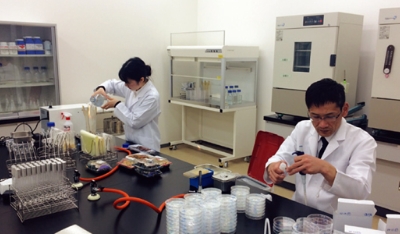
Free-of-charge purified water, wheelchairs, considerate parking areas, and accessible toilet
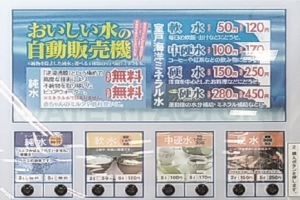
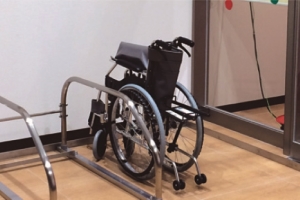
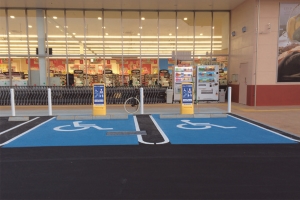
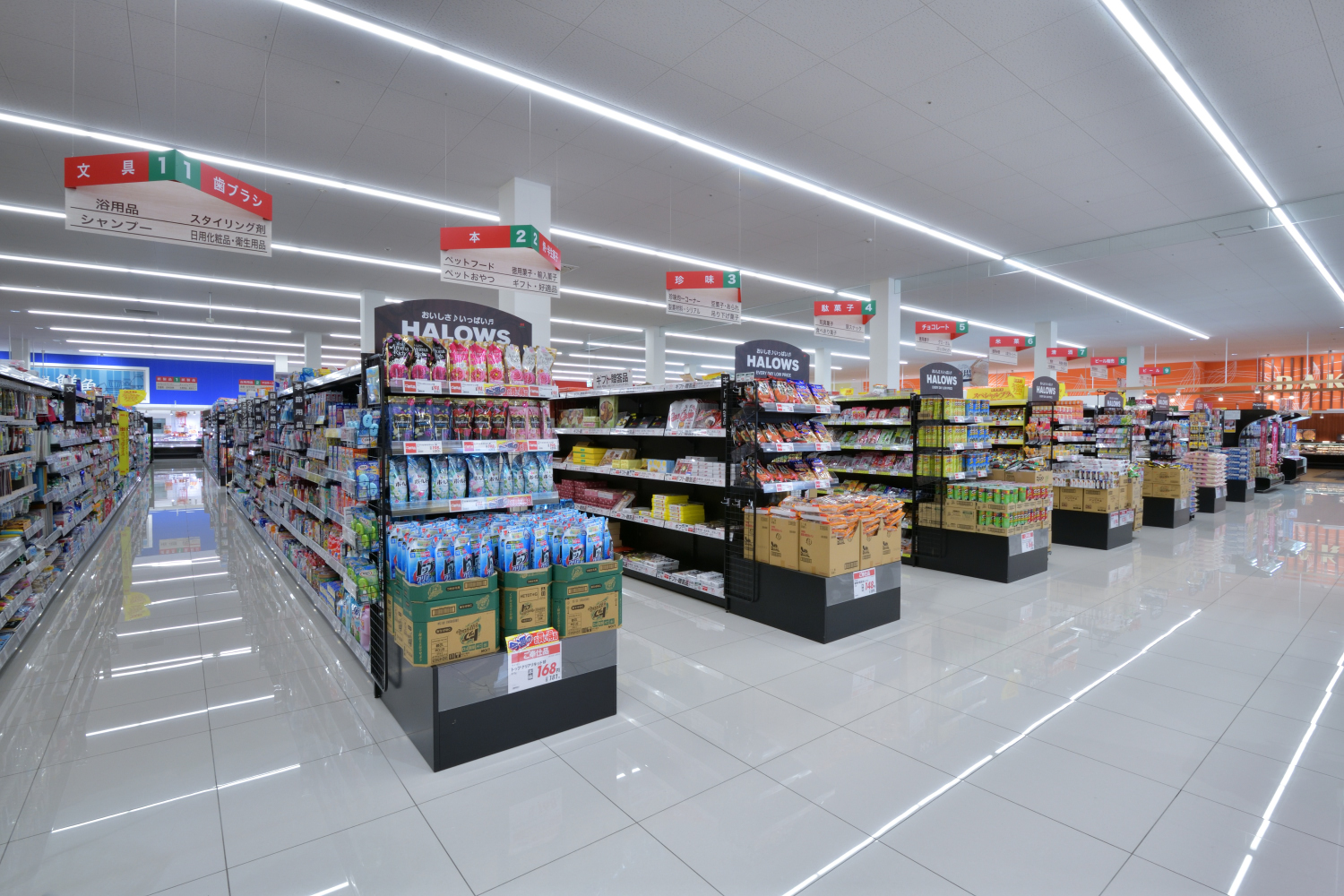
Quality control management competition
We also conduct quality control management competition in-house to evaluate hygiene, labeling, and other matters in a comprehensive way.
Support for food bank activities
This has made it possible to provide dairy products and daily-delivery foods, whose short use-by periods make them difficult to be provided to food banks. We are also widely calling on other companies and manufacturers in the same industry to provide their products under this model, and it is attracting many supporters.
The growth of each and every one of our directors and employees is of utmost importance for the continuation of sustainability initiatives. We are working to develop systems that will enable our people to actively participate in the workplace.
Promotion of employment through the practice of diversity
We are also enhancing our various employee assistance programs, such as actively promoting women to management positions and encouraging the effective use of the scheme that allows employees with small children to work shorter hours.
Human resources development with over 1,900 hours of training a year
Skills development with a “professional qualifications grade system”
Promotions, upgrade, and wage rises are also backed up by skills development and grade-based education and training programs under a merit-rating system.

In response to issues related to society and human rights, we are committed to making contributions in various areas in local communities such as education, sports and dietary education.
We also believe that food has an important role to play in local communities.
Halows Foundation
Promotion of employment of people with disabilities
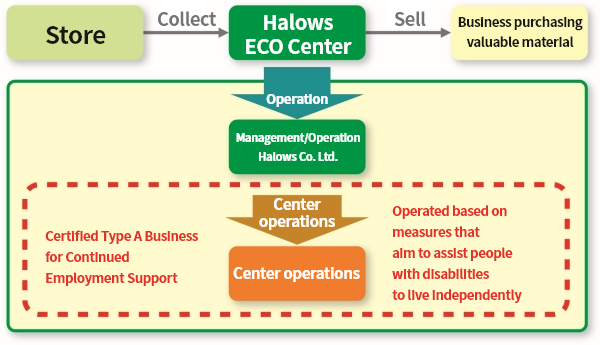
Conclusion of disaster assistance agreements
These agreements ensure the provision of food and other daily necessities to people in the area in the event of a disaster, etc. As well as contributing to the stability of daily life after the disaster, we hope that we can help to alleviate the feelings of anxiety at such times.
To resolve the issues surrounding the global environment(CO2 emissions reduction, energy problems, effective use of resources, countermeasures against the destruction of nature, etc.), we are engaged in the collection of resources at stores and the effective re-use of resources.
Promotion of energy saving in stores and logistics operations
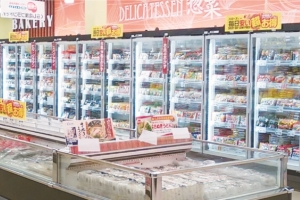
Example of in-store energy-saving devices: Freezer cases with doors
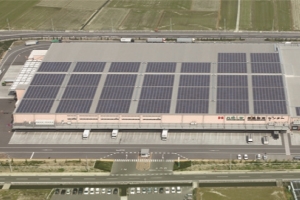
Hayashima Logistics Center
Promotion of CO2 reduction, reduction of waste
We also share success stories of food waste improvement measures being undertaken at individual stores with all stores, which is leading to the reduction of waste disposal rates.
Effective re-use of resources
Paper, aluminum, and other resources generated at our stores and logistics centers are sent to our HALOWS ECO Center for compression and volume reduction treatment to turn them into raw materials, as part of our resources recycling efforts.
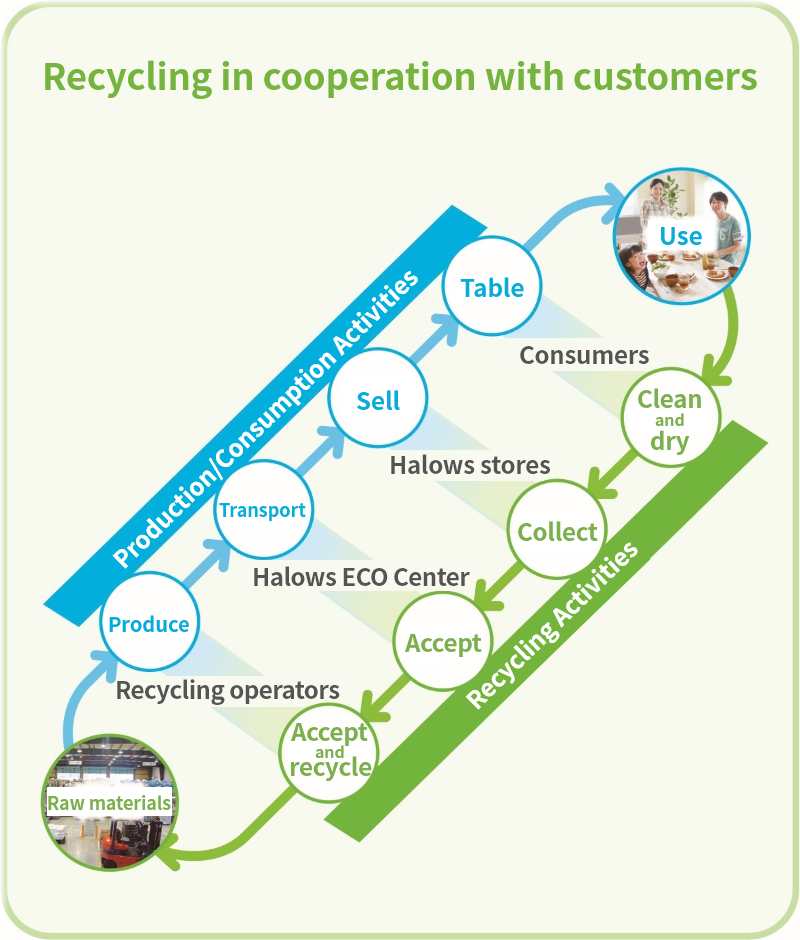
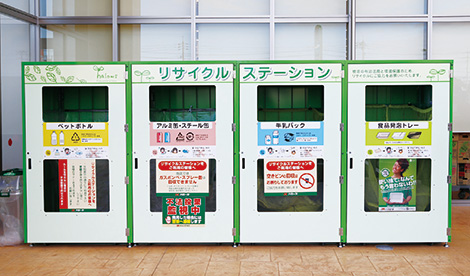
Recycling box installed in front of stores



